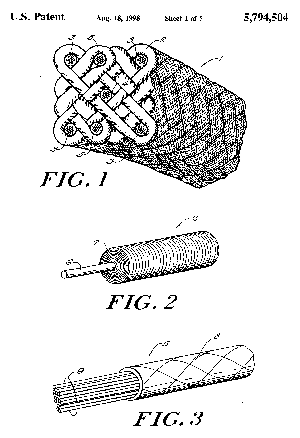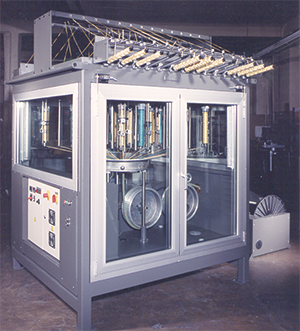Mechanical and Compression Packing
Mechanical packing dates back more than 5,000 years when horse hair was braided and coated with animal fat for lubrication and additional sealing characteristics.
#basics
The place to start is by understanding what packing is supposed to do: Packing is designed to control leakage from the stem and bore area of the valve. This affects the seal by completely blocking or reducing the voids between the valve stem and the bore of the stuffing box.
To create an effective seal and prevent leakage, the stress applied to the packing must be greater than the pressure of the media being sealed. The required packing stress is applied by tightening the packing gland against the top ring of packing to transmit lateral force through the packing set and rings. This force creates radial expansion of the packing set and rings against the stuffing box and the valve stem.
For packing to work properly, four conditions should be seen in the design, selection and use of the packing product:
- Resiliency allows the packing set/rings to deform under load, but also have the ability to recover from compression over the life of the valve.
- Chemical resistance prevents the packing from attack so it’s unaffected by the media being sealed.
- Strength protects the packing from destruction during the valve’s operation, when under media pressure and when media states change, such as when crystallization or congealing of fluids occur.
- Proper installation is essential because whatever packing is chosen for a particular application, it must be installed properly to positively seal valves long term.
PACKING MAKEUP
Mechanical and compression packing consists of various combinations of fibers, yarns and lubricants. Three basic yarn types are made from a variety of fibers. They are: 1) gang spun, which is made by spinning short, non-continuous staple fibers (usually natural fibers); 2) continuous filament, which is manmade fibers of any desired length; and 3) a combination of materials such as graphite and wire or other materials to create yarn with characteristics of the combined components.
Many yarn types are used to make general packing (e.g., graphite, carbon, PTFE, acrylic, aramid, fiber glass, cotton). However, when considering packing for use in valves, the number of materials is more limited.
One of the most common materials is graphite, which is divided into two categories: flexible graphite and PFTE.
Flexible graphite is pitch-based carbon mined from the earth and made from a process called pyrolization. Base fibers of pitch, rayon and acrylic are thermally treated in the presence of oxygen to drive off impurities. The pitch base then receives an additional chemical exfoliation before it goes through pyrolization.
The yarn made from pitch has to be made with either an internal carrier or external carrier because the pitch-based fibers cannot be made continuous without the use of a carrier. Graphite yarn made from rayon or acrylic is manmade and also can be made into a continuous filament by adding a carrier.
PTFE has a very high resistance to chemicals with exceptionally low friction and adhesion to the valve stem. However, its use is limited to lower temperatures than graphite, and it can be affected by thermal growth.
Various types of braiding are employed to create the different braid patterns used in making packing. The machines that manufacture mechanical packing today are inverted, overhead, square, upright and round braiders. The braiding is different for a variety of reasons, some because of the actual packing performance in different applications and others because a certain type offers special ways of applying lubricants and blocking agents needed to effectively seal certain applications. The different braider types also provide the ability to increase or decrease the actual strands of yarn needed for the different cross sections of packing or are made for other, more technical reasons.
The braiders produce various braid types as well. Common braid types include plait, square, round, interbraid, braid-over-core and twisted. The difference in types is related to the material being braided along with the level of sealing needed from a particular packing product. This can be based on pressure, temperature or fugitive emission sealing. For example, many of the products manufactured from flexible graphite yarn that will be used for low-emission sealing are braided using a plait braid and lubricants and blocking agents. This arrangement provides long-term sealability below 100 ppm as required by EPA.
VALVE SEALING
After the materials and processes used to manufacture packing are understood, the next step to consider is valve sealing. Understanding sealing requires some awareness of why leaks occur in the first place.
The first point to consider is proper maintenance. Maintenance of valve packing is critical for minimizing leakage or emissions; so, too is properly trained staff who know the right way to install as well as to maintain both the packing and the valve.
Also critical is the use of packing with corrosion inhibitors, which can extend both the life of the valve and the packing. Corroded or pitted stems, on the other hand, can destroy the packing.
Selecting the right packing for the process application is vital to long-term sealability. That means understanding the pressure, temperature, potential of high cycling and other process conditions that affect which packing materials are appropriate for what application. It also means knowing what valve design requirements will make one packing type attractive over another.
In recommending or designing an effective packing solution, temperature cycling is taken into consideration. Cycling creates some unique issues in valve sealing because expansion or contraction of valve components subject to constant temperature swings can cause many packing styles to leak. By knowing cycling data, a live load system can be added easily to to the gland flange bolts to account for issues caused by increases and decreases of temperature.
Another important factor to consider is the current condition of the valve. When a repack of a valve is done, for example, all of the parts must be in good working order before the repack occurs, including stem finish, bore finish and the gland flange bolt condition.
Other factors to consider in properly sealing valves are the orientation of the valve in the piping system (horizontal or vertical?), vibration and the number of packing rings that will be used (less than five or more than six?).
Review
It is critical when understanding the basics of packing to consider how packing is viewed as part of the larger picture of valves and flow control. In too many instances, packing is an afterthought. For example, when valve repair work is to be performed, rushed decisions are too often made causing installation of the wrong material or bad installations of the right material.
On the other hand, the right packing style used with the right valve design and proper installation is taking on increased significance for industry as EPA places more aggressive regulations on end users. In the end, it is clear that packing will continue to become more and more effective.
Rodney Roth is manager of Strategic Accounts‒Stationary Equipment, Chesterton (www.chesterton.com). Reach him at Rodney.roth@chesterton.com.
A HISTORICAL PERSPECTIVE ON EMISSIONS
Packing manufacturers are constantly challenged by end users’ increased need for materials that can meet EPA mandates. As these mandates become more stringent, manufacturers are required to improve packing designs to meet customer demands, both technically and commercially.
After the Clean Air Act of 1990, many changes occurred in packing.
When an Electric Power Research Institute study determined the most effective replacement for asbestos was flexible graphite, for example, it became the norm in packing products.
The creation of the Petroleum Environmental Research Forum, which is made up of major end users, created a means to fund development of testing equipment and research into better packing.
But over time, industry itself has had to push for better packing because of EPA consent decrees.
All of these developments have led to additional means for testing and proving packing products.
In 2006, the American Petroleum Institute developed API 622 as a standard for testing packing and valves for effective sealing. With a wide variation in results and no true way to compare those results, API revised 622 to be a test of packing only. The issuance of API 622 Revision 2 in 2011 was quickly followed by the development of API 624, Valve Type Testing with Graphite Packing. API recently released this standard, which requires the use of API 622-tested packing. API 624 requires the valve be tested for 310 mechanical cycles with three thermal cycles from ambient temperature to 500°F (260°C) with leakage not to exceed 100 parts per million (ppm) at any point. No packing re-torque is allowed for the duration of the test. Now that API 624 has been published, other API standards have added the requirement of passing 624 to the valve standard. For example, 624 must be passed for a valve to be labeled an API 600 valve.
API continues to be proactive in developing standards for testing valves and packing for low-emissions requirements and is currently working to develop API 641 for testing quarter-turn valves for compliance.
In addition to the new valve testing standards, repair of valves is also seeing new requirements. API RP621, for example, is currently being revised and now has a section low emissions.
RELATED CONTENT
-
The Basics of Eccentric Plug Valves
Wastewater systems present many challenges to pumps and valves because the flow can contain grit, solids and debris, depending where in the process the equipment is located.
-
Back to Basics: Globe Valves
There are many applications where the globe valve outshines other designs, so the future is still bright for these long-time favorites of the flow control industry.
-
Ancient Roman Valves
The story of water supply in the ancient Roman Empire is grand.









 Unloading large gate valve.jpg;maxWidth=214)


